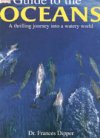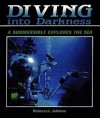Coral Gardens Additional Information
Share this:
- Share via email (Opens in new window) Email
- Click to share on Facebook (Opens in new window) Facebook
- Click to share on X (Opens in new window) X
- Click to share on Pinterest (Opens in new window) Pinterest
- Click to share on Reddit (Opens in new window) Reddit
- Share to Google Classroom (Opens in new window) Google Classroom
- Click to print (Opens in new window) Print
oceanexplorer.noaa.gov/explorations/06davidson/welcome.html (NOAA) and www.mbari.org/news/news_releases/2006/davidson.html(MBARI).
Information about the 2002 Davidson Seamount expedition can be found at oceanexplorer.noaa.gov/explorations/02davidson/davidson.html (NOAA).
To find out more about seamounts, go to www.mbnms-simon.org/sections/seamounts/overview.php?sec=s (NOAA).
The Monterey Bay National Marine Sanctuary has a Web site at montereybay.noaa.gov/(NOAA).
The Monterey Bay Aquarium Research Institute has a Web site at mbari.org/(MBARI).
The Moss Landing Marine Laboratories have a Web site at www.mlml.calstate.edu/ MLML).
Sohn, Emily. 2004. Explorer of the extreme deep. Science News for Kids (Nov. 10). Available at http://www.sciencenewsforkids.org/articles/20041110/Feature1.asp.
Books recommended by SearchIt!Science:
 |
DK Guide to the Oceans— Frances Dipper
Published by DK Publishing, 2002.
Mudskippers are sea creatures that can also walk on land and even climb trees. Before leaving the water, they fill their gills with water and air so that they can breathe on land. This book contains thousands of facts about underwater life, as well as full-color photographs, diagrams, and maps. Learn more about coral reefs, underwater volcanoes, beaches, frozen seas, and many other watery environments. Discover the assortment of animals and plants that call the ocean home. Find out how humans have both harmed and protected the environment. See how you can help keep the oceans safe for all creatures. Complete with additional sections on ocean mythology, records, and Web sites, this book provides an introduction to the mysterious world underwater. |
 |
Diving Into Darkness: A Submersible Explores the Sea—Rebecca L. Johnson
Published by Lerner Publishing, 1989.
Imagine diving 2,400 feet below the ocean’s surface—all the way down to the sandy bottom. As you descend, the water changes from light blue to blue green to inky black. Until recently, such undersea journeys were impossible, and we knew little about life on the ocean floor. Today, special deep-diving machines called submersibles can safely carry people to great depths. Aboard submersibles, researchers can explore underwater creatures, learn about important minerals, and extend our understanding of ocean life. In fact, every time scientists descend to the bottom of the ocean, they learn or collect something new. With color photographs and drawings, this book shows what it’s like to explore the ocean’s bottom on board a submersible. The author also considers the history of underwater diving devices, which may date back as far as 333 B.C., and spotlights valuable resources—from minerals to food—that the sea has to offer. |
Power Words
coral Small sea animals with a soft body, a hard outer skeleton, and tentacles that sting. Coral live in shallow water in large groups called colonies. Coral reefs are formed from the skeletons of these animals.
sponge A type of sea animal that attaches to rocks or other objects. Sponges are invertebrates with only one kind of body tissue and no organs. Their bodies have many holes and passages that are used to filter food out of water.
 |
Copyright © 2002, 2003 Houghton-Mifflin Company. All rights reserved. Used with permission.